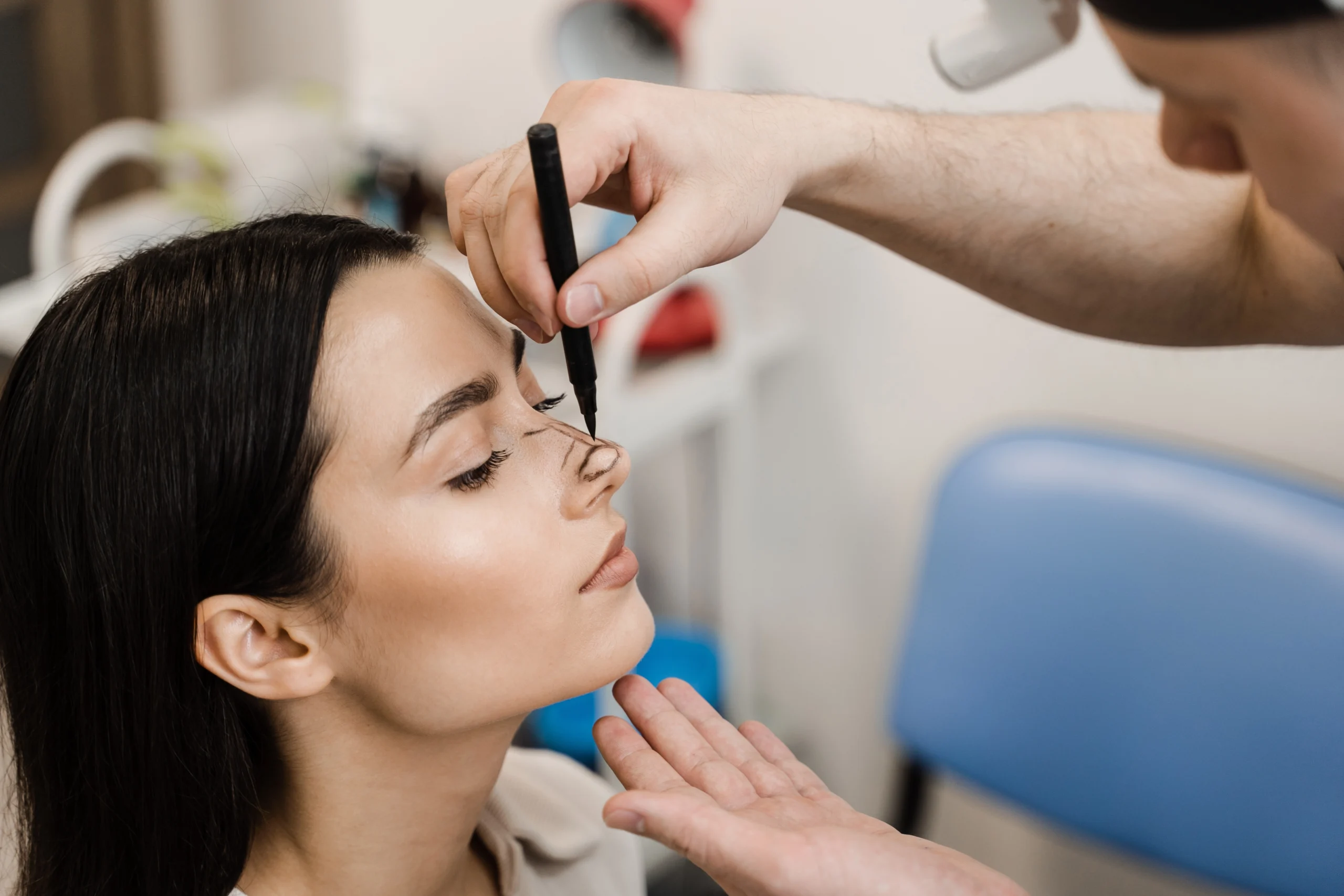Key Takeaways
Open rhinoplasty allows for more extensive modifications but requires a longer recovery period.
Closed rhinoplasty offers quicker recovery with no visible scars but is better suited for minor adjustments.
The cost of open rhinoplasty typically ranges from $7,500 to $15,000, while closed rhinoplasty costs between $5,000 and $10,000.
The choice between open and closed rhinoplasty depends on the extent of changes needed and individual recovery preferences.
Consulting an experienced surgeon is critical to determining the best approach for your unique needs.
Overview of Rhinoplasty: Open and Closed Techniques
Rhinoplasty surgery, commonly referred to as a nose job, is performed using two primary techniques: open and closed. Each serves a different purpose depending on the complexity of the nasal changes required. Open rhinoplasty involves a small incision on the columella (the soft tissue between the nostrils), allowing the surgeon a clear view of the nasal structure. Closed rhinoplasty, in contrast, involves internal incisions within the nostrils, leaving no visible scars but providing less visibility for the surgeon. The choice between these techniques can greatly impact both the results and the recovery process.
Pros and Cons of Open Rhinoplasty
Advantages:
- Enhanced visibility for the surgeon, allowing for more precise adjustments.
- Ideal for complex nasal procedures that require extensive reshaping.
- Improved stabilization of the nasal structure after surgery.
Drawbacks:
- Longer recovery time, with more noticeable swelling and bruising.
- Visible scarring, although minimal and usually well-hidden, on the columella.
- More invasive procedure overall.
Pros and Cons of Closed Rhinoplasty
Advantages:
- No visible external scars, as incisions are made inside the nostrils.
- Shorter surgery duration and faster recovery time.
- Less invasive, making it a good option for minor adjustments.
Drawbacks:
- Limited visibility for the surgeon, which may make complex adjustments more difficult.
- Not suitable for extensive modifications.
- Fewer surgeons specialize in this technique, limiting your options.
Recovery Time: Open vs Closed Rhinoplasty
Open Rhinoplasty
- First week: Significant swelling and bruising, with a splint on the nose.
- Second week: Removal of splint; swelling and bruising begin to subside.
- First month: Noticeable reduction in swelling, with early results visible.
- Three to six months: Continued improvement, with most swelling gone.
- One year: Final results are apparent.
Closed Rhinoplasty
- First week: Minimal swelling and bruising, no splint may be required.
- Second week: Swelling and bruising significantly reduced.
- First month: Most swelling gone, with visible improvements.
- Three to six months: Final results becoming more defined.
- One year: Full healing and complete results.
Cost Considerations: Open vs Closed Rhinoplasty
Rhinoplasty costs can vary significantly depending on factors such as the surgeon’s experience, geographic location, and the complexity of the procedure. While closed rhinoplasty may seem more affordable, it’s important to choose the method that best suits your medical and aesthetic needs. Always consult with a qualified surgeon to understand the full scope of costs, including anesthesia, facility fees, and post-operative care.
Making the Right Choice: Open or Closed Rhinoplasty?
The decision between open and closed rhinoplasty depends on your personal goals and the complexity of the changes you wish to make. Open rhinoplasty may be the better choice for significant modifications, while closed rhinoplasty is ideal for those seeking minor adjustments with minimal downtime.
Consulting with an experienced rhinoplasty surgeon is critical to assess which method is best suited to your needs. Make sure to discuss your goals, expectations, and any concerns during your consultation to make an informed decision.
FAQs
What are the main differences between open and closed rhinoplasty?
Open rhinoplasty involves an external incision on the columella, allowing for extensive modifications, while closed rhinoplasty uses internal incisions with no visible scars, but is limited to minor adjustments.
How long does it take to recover from each type of surgery?
Open rhinoplasty generally has a longer recovery time, with complete healing taking up to a year. Closed rhinoplasty offers faster recovery, with most swelling subsiding within a month.
Is one method safer than the other?
Both methods are safe when performed by an experienced surgeon. The choice between the two depends on the complexity of the desired changes and your preferences for recovery time and scarring.
Which technique provides higher patient satisfaction?
Patient satisfaction often depends on the individual’s nasal anatomy, desired changes, and the surgical procedure selected. The closed rhinoplasty technique, which involves incisions inside the nostrils, is preferred by most patients seeking minor refinements, such as a smoother nasal hump or subtle reshaping of the nasal tip. This method leaves no visible scarring and generally involves less disruption to the surrounding tissue. However, for more complex cases, such as reshaping a narrow strip of cartilage or making structural adjustments, an open approach may allow for greater precision. Ultimately, both techniques can yield high satisfaction when matched appropriately to the patient’s goals and anatomy.
Is it possible to combine open or closed rhinoplasty with other facial plastic surgeries?
Yes, it’s common to combine rhinoplasty with other facial procedures for more balanced and comprehensive results. The open rhinoplasty procedure offers better visibility and access, which can be particularly beneficial when combined with chin augmentation or facelift. On the other hand, the closed approach is often favored for patients undergoing minor nasal refinement in conjunction with less invasive procedures, such as eyelid surgery. Many patients choose to combine treatments in a single surgical session to minimize overall recovery time and anesthesia exposure.
Which technique is better for revision rhinoplasty?
Revision rhinoplasty often involves more complex reshaping of the nasal bone, correction of asymmetries, or rebuilding support with cartilage grafts. In such cases, the open technique is generally preferred, as it allows the surgeon to work with greater precision. While the closed technique may still be appropriate for minor revisions, the open approach tends to offer better control, especially when prior scar tissue is present.
ACT NOW! GET A FREE CONSULTATION – TODAY ONLY!
CALL US NOW TO LEARN MORE ABOUT HOW A BROKEN NOSE IS REPAIRED BY A PLASTIC SURGEON! 346-413-9313
Don’t miss this exclusive opportunity to get expert advice and begin your journey towards a new, confident you. Texas Sinus and Snoring’s dedicated team is ready to help you achieve the results you’ve always wanted. Contact us today to schedule your free consultation and take the first step towards a better, more confident you!




